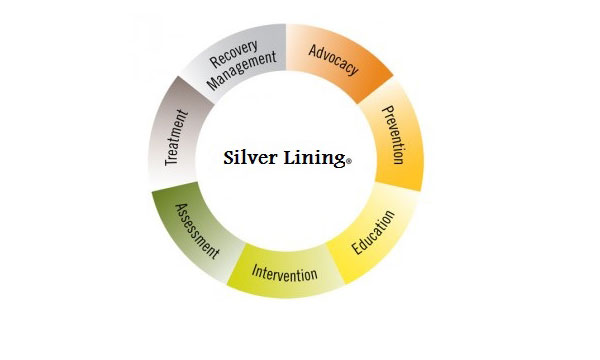Medications offer help in suppressing withdrawal symptoms during detoxification. However, medically assisted detoxification is not in itself "treatment"—it is only the first step in the treatment process. Patients who go through medically assisted withdrawal but do not receive any further treatment show drug abuse patterns similar to those who were never treated.
Medications can be used to help reestablish normal brain function and to prevent relapse and diminish cravings. Currently, we have medications for opioids (heroin, morphine), tobacco (nicotine), and alcohol addiction and are developing others for treating stimulant (cocaine, methamphetamine) and cannabis (marijuana) addiction. Most people with severe addiction problems, however, are polydrug users (users of more than one drug) and will require treatment for all of the substances that they abuse.
For patients with complex recovery issues that require more time, silver Lining offers extended care programs. These programs allow more in-depth time on special issues, mental health complications, relapse prevention and sober living skills. Patients have time to put into practice their new recovery skills and develop a deeper understanding of what they need to do to recover. Patients typically stay 60 days but some people require up to 90 days.
Opioids
Methadone, buprenorphine and, for some individuals, naltrexone are effective medications for the treatment of opiate addiction. Acting on the same targets in the brain as heroin and morphine, methadone and buprenorphine suppress withdrawal symptoms and relieve cravings. Naltrexone works by blocking the effects of heroin or other opioids at their receptor sites and should only be used in patients who have already been detoxified. Because of compliance issues, naltrexone is not as widely used as the other medications. All medications help patients disengage from drug seeking and related criminal behavior and become more receptive to behavioral treatments.
Tobacco
A variety of formulations of nicotine replacement therapies now exist—including the patch, spray, gum, and lozenges—that are available over the counter. In addition, two prescription medications have been FDA–approved for tobacco addiction: bupropion and varenicline. They have different mechanisms of action in the brain, but both help prevent relapse in people trying to quit. Each of the above medications is recommended for use in combination with behavioral treatments, including group and individual therapies, as well as telephone quit lines.
Alcohol
Three medications have been FDA–approved for treating alcohol dependence: naltrexone, acamprosate, and disulfiram. A fourth, topiramate, is showing encouraging results in clinical trials. Naltrexone blocks opioid receptors that are involved in the rewarding effects of drinking and in the craving for alcohol. It reduces relapse to heavy drinking and is highly effective in some but not all patients—this is likely related to genetic differences. Acamprosate is thought to reduce symptoms of protracted withdrawal, such as insomnia, anxiety, restlessness, and dysphoria (an unpleasant or uncomfortable emotional state, such as depression, anxiety, or irritability). It may be more effective in patients with severe dependence. Disulfiram interferes with the degradation of alcohol, resulting in the accumulation of acetaldehyde, which, in turn, produces a very unpleasant reaction that includes flushing, nausea, and palpitations if the patient drinks alcohol. Compliance can be a problem, but among patients who are highly motivated, disulfiram can be very effective.
Behavioral Treatments
Behavioral treatments help patients engage in the treatment process, modify their attitudes and behaviors related to drug abuse, and increase healthy life skills. These treatments can also enhance the effectiveness of medications and help people stay in treatment longer. Treatment for drug abuse and addiction can be delivered in many different settings using a variety of behavioral approaches.
